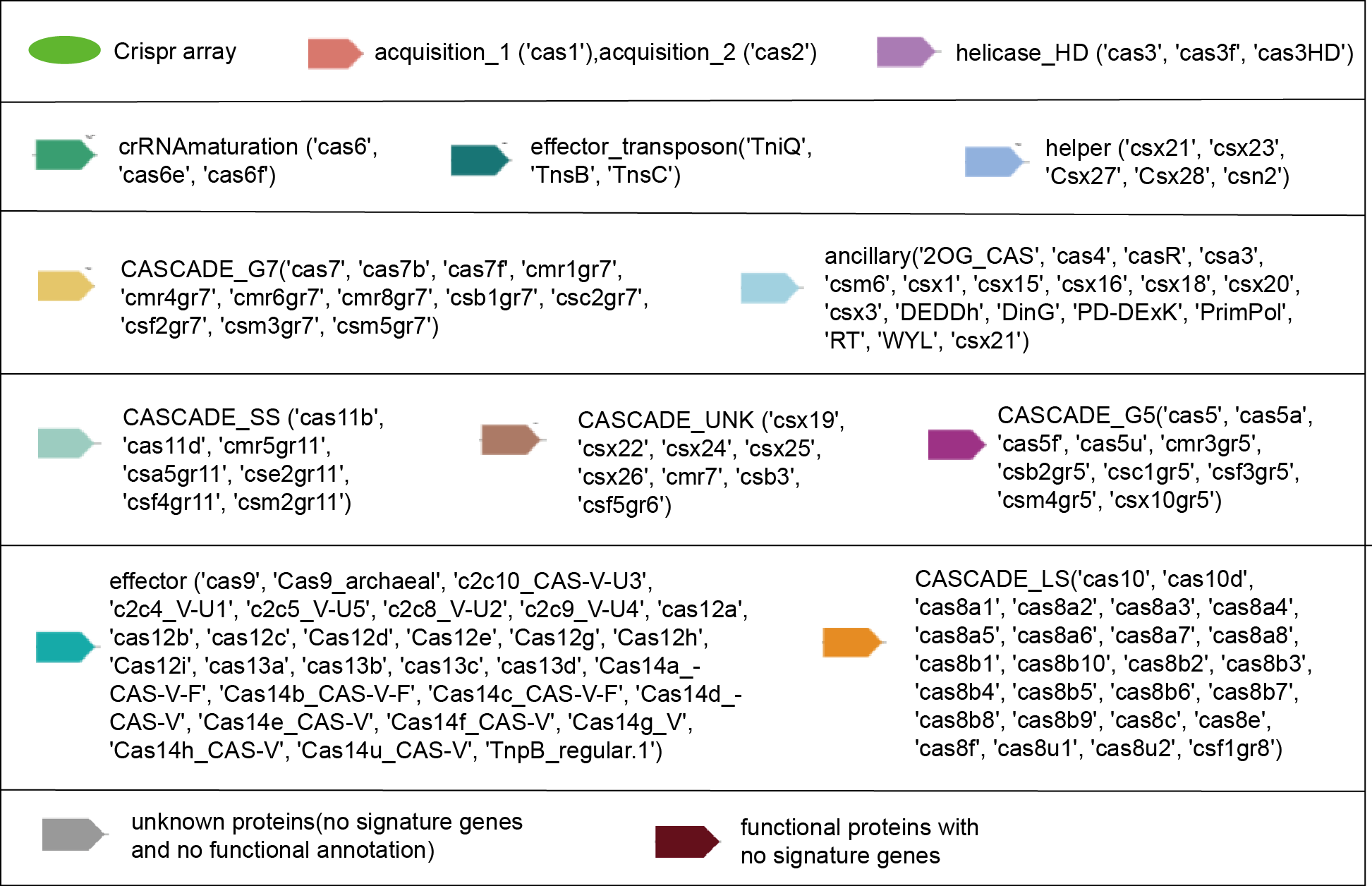| NZ_CP024968.1|WP_100671498.1|783248_784628_-|BMP-family-ABC-transporter-substrate-binding-protein |
gnl|CDD|224658 |
COG1744, Med, Uncharacterized ABC-type transport system, periplasmic component/surface lipoprotein [General function prediction only].
|
1.12855e-16 |
| NZ_CP024968.1|WP_100671482.1|773816_774911_-|redox-regulated-ATPase-YchF |
gnl|CDD|236583 |
PRK09601, PRK09601, redox-regulated ATPase YchF.
|
0 |
| NZ_CP024968.1|WP_100671504.1|787983_789981_-|ATP-dependent-zinc-metalloprotease-FtsH |
gnl|CDD|273520 |
TIGR01241, ATP-dependent_zinc_metalloprotease_FtsH, ATP-dependent metalloprotease FtsH. HflB(FtsH) is a pleiotropic protein required for correct cell division in bacteria. It has ATP-dependent zinc metalloprotease activity. It was formerly designated cell division protein FtsH. [Cellular processes, Cell division, Protein fate, Degradation of proteins, peptides, and glycopeptides].
|
0 |
| NZ_CP024968.1|WP_100671514.1|793326_793917_-|recombination-protein-RecR |
gnl|CDD|234616 |
PRK00076, recR, recombination protein RecR; Reviewed.
|
1.5681e-64 |
| NZ_CP024968.1|WP_164704251.1|796078_796879_+|HAD-IIB-family-hydrolase |
gnl|CDD|369792 |
pfam08282, Hydrolase_3, haloacid dehalogenase-like hydrolase. This family contains haloacid dehalogenase-like hydrolase enzymes.
|
8.40234e-33 |
| NZ_CP024968.1|WP_100671510.1|791967_792711_-|hypothetical-protein |
gnl|CDD|379051 |
pfam13177, DNA_pol3_delta2, DNA polymerase III, delta subunit. DNA polymerase III, delta subunit (EC 2.7.7.7) is required for, along with delta' subunit, the assembly of the processivity factor beta(2) onto primed DNA in the DNA polymerase III holoenzyme-catalyzed reaction. The delta subunit is also known as HolA.
|
1.08941e-45 |
| NZ_CP024968.1|WP_100671506.1|790043_791240_-|tRNA-lysidine(34)-synthetase-TilS |
gnl|CDD|238950 |
cd01992, PP-ATPase, N-terminal domain of predicted ATPase of the PP-loop faimly implicated in cell cycle control [Cell division and chromosome partitioning]. This is a subfamily of Adenine nucleotide alpha hydrolases superfamily.Adeninosine nucleotide alpha hydrolases superfamily includes N type ATP PPases and ATP sulphurylases. It forms a apha/beta/apha fold which binds to Adenosine group. This domain has a strongly conserved motif SGGXD at the N terminus.
|
1.92393e-64 |
| NZ_CP024968.1|WP_100671520.1|796899_797331_-|nucleoside-deaminase |
gnl|CDD|238612 |
cd01285, nucleoside_deaminase, Nucleoside deaminases include adenosine, guanine and cytosine deaminases. These enzymes are Zn dependent and catalyze the deamination of nucleosides. The zinc ion in the active site plays a central role in the proposed catalytic mechanism, activating a water molecule to form a hydroxide ion that performs a nucleophilic attack on the substrate. The functional enzyme is a homodimer. Cytosine deaminase catalyzes the deamination of cytosine to uracil and ammonia and is a member of the pyrimidine salvage pathway. Cytosine deaminase is found in bacteria and fungi but is not present in mammals; for this reason, the enzyme is currently of interest for antimicrobial drug design and gene therapy applications against tumors. Some members of this family are tRNA-specific adenosine deaminases that generate inosine at the first position of their anticodon (position 34) of specific tRNAs; this modification is thought to enlarge the codon recognition capacity during protein synthesis. Other members of the family are guanine deaminases which deaminate guanine to xanthine as part of the utilization of guanine as a nitrogen source.
|
5.79338e-27 |
| NZ_CP024968.1|WP_164704261.1|774913_775114_-|DUF951-family-protein |
gnl|CDD|377606 |
pfam06107, DUF951, Bacterial protein of unknown function (DUF951). This family consists of several short hypothetical bacterial proteins of unknown function. Structural modelling suggests this domain may bind nucleic acids.
|
1.56456e-15 |
| NZ_CP024968.1|WP_100671496.1|781703_783239_-|ABC-transporter-ATP-binding-protein |
gnl|CDD|226364 |
COG3845, COG3845, ABC-type uncharacterized transport systems, ATPase components [General function prediction only].
|
0 |
| NZ_CP024968.1|WP_100671516.1|793919_795896_-|DNA-polymerase-III-subunit-gamma/tau |
gnl|CDD|274111 |
TIGR02397, DNA_polymerase_III_subunit_gamma, DNA polymerase III, subunit gamma and tau. This model represents the well-conserved first ~ 365 amino acids of the translation of the dnaX gene. The full-length product of the dnaX gene in the model bacterium E. coli is the DNA polymerase III tau subunit. A translational frameshift leads to early termination and a truncated protein subunit gamma, about 1/3 shorter than tau and present in roughly equal amounts. This frameshift mechanism is not necessarily universal for species with DNA polymerase III but appears conserved in the exterme thermophile Thermus thermophilis. [DNA metabolism, DNA replication, recombination, and repair].
|
2.79051e-149 |
| NZ_CP024968.1|WP_100671494.1|779864_781700_-|hypothetical-protein |
gnl|CDD|226962 |
COG4603, COG4603, ABC-type uncharacterized transport system, permease component [General function prediction only].
|
5.65623e-56 |
| NZ_CP024968.1|WP_164703833.1|776490_778131_-|APC-family-permease |
gnl|CDD|372624 |
pfam13520, AA_permease_2, Amino acid permease.
|
1.15913e-23 |
| NZ_CP024968.1|WP_100671490.1|778235_778952_-|purine-nucleoside-phosphorylase |
gnl|CDD|350157 |
cd09006, PNP_EcPNPI-like, purine nucleoside phosphorylases similar to Escherichia coli PNP-I (DeoD) and Trichomonas vaginalis PNP. Escherichia coli purine nucleoside phosphorylase (PNP)-I (or DeoD) accepts both 6-oxo and 6-amino purine nucleosides as substrates. Trichomonas vaginalis PNP has broad substrate specificity, having phosphorolytic catalytic activity with adenosine, inosine, and guanosine (with adenosine as the preferred substrate). This subfamily belongs to the nucleoside phosphorylase-I (NP-I) family, whose members accept a range of purine nucleosides as well as the pyrimidine nucleoside uridine. The NP-1 family includes phosphorolytic nucleosidases, such as purine nucleoside phosphorylase (PNPs, EC. 2.4.2.1), uridine phosphorylase (UP, EC 2.4.2.3), and 5'-deoxy-5'-methylthioadenosine phosphorylase (MTAP, EC 2.4.2.28), and hydrolytic nucleosidases, such as AMP nucleosidase (AMN, EC 3.2.2.4), and 5'-methylthioadenosine/S-adenosylhomocysteine (MTA/SAH) nucleosidase (MTAN, EC 3.2.2.16). The NP-I family is distinct from nucleoside phosphorylase-II, which belongs to a different structural family.
|
1.00493e-127 |
| NZ_CP024968.1|WP_100671512.1|792689_793325_-|dTMP-kinase |
gnl|CDD|234814 |
PRK00698, tmk, thymidylate kinase; Validated.
|
3.45889e-84 |
| NZ_CP024968.1|WP_100671502.1|785996_787877_-|tRNA-uridine-5-carboxymethylaminomethyl(34)-synthesis-enzyme-MnmG |
gnl|CDD|235362 |
PRK05192, PRK05192, tRNA uridine-5-carboxymethylaminomethyl(34) synthesis enzyme MnmG.
|
0 |
| NZ_CP024968.1|WP_100671488.1|775913_776522_-|CDP-diacylglycerol--glycerol-3-phosphate-3-phosphatidyltransferase |
gnl|CDD|273139 |
TIGR00560, pgsA, CDP-diacylglycerol--glycerol-3-phosphate 3-phosphatidyltransferase. Alternate names: phosphatidylglycerophosphate synthase; glycerophosphate phosphatidyltransferase; PGP synthase. A number of related enzymes are quite similar in both sequence and catalytic activity, including Saccharamyces cerevisiae YDL142c, now known to be a cardiolipin synthase. There may be problems with incorrect transitive annotation of near homologs as authentic CDP-diacylglycerol--glycerol-3-phosphate 3-phosphatidyltransferase. [Fatty acid and phospholipid metabolism, Biosynthesis].
|
3.36871e-37 |
| NZ_CP024968.1|WP_100671486.1|775110_775815_-|16S-rRNA-(guanine(527)-N(7))-methyltransferase-RsmG |
gnl|CDD|234637 |
PRK00107, gidB, 16S rRNA (guanine(527)-N(7))-methyltransferase RsmG.
|
3.3812e-65 |
| NZ_CP024968.1|WP_100671492.1|778981_779881_-|ABC-transporter-permease |
gnl|CDD|224005 |
COG1079, COG1079, Uncharacterized ABC-type transport system, permease component [General function prediction only].
|
6.02108e-50 |
| NZ_CP024968.1|WP_100671508.1|791245_791968_-|tRNA1(Val)-(adenine(37)-N6)-methyltransferase |
gnl|CDD|226608 |
COG4123, COG4123, Predicted O-methyltransferase [General function prediction only].
|
2.72987e-73 |
